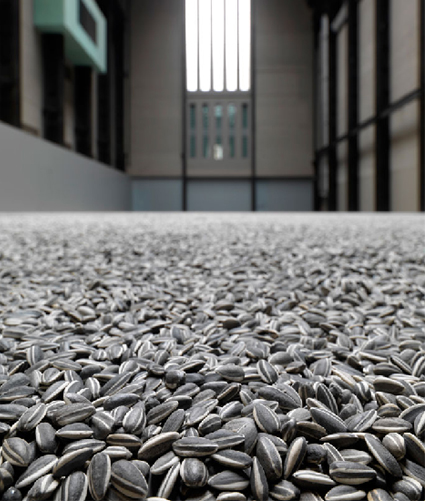Artists enjoy a peculiarly ambiguous status in modern China. They are allowed freedoms of movement and expression denied to the vast majority of the population. Yet should they raise their voices too loud, when speaking of certain subjects, they are liable to suffer swift and ruthless retribution. Ai Wei Wei, whose latest work was installed in Tate Modern's turbine hall earlier this week, can testify to that. Following the Sichuan earthquake of 2008, in which thousands of schoolchildren were entombed in the rubble of their own schools, he created a series of works expressing his outrage at the Chinese Communist government's attempts to wash its hands of responsibility. One night in August of last year, the police came knocking at his door. He was beaten so severely that he suffered a life-threatening cerebral haemorrhage. Following in the footsteps of his father, a dissident poet who was ruthlessly persecuted under the Maoist regime, Wei Wei continues to work undaunted.
For Tate Modern he has created a naggingly subtle installation: part prophecy, part threat. Walking to the far end of the turbine hall, the visitor is confronted by a huge geometrically arranged field of what at first sight seem to be stone chippings or gravel. Treading them underfoot – they crunch, satisfyingly, beneath the feet – it emerges that they are in fact tiny porcelain simulacra of sunflower seeds. Altogether, there are a hundred million of them. It took an entire factory of workers in the city of Jingdezhen, once famous for its production of imperial porcelain, more than two years to produce the huge stockpile of stone seeds. They were painted by hand so each one is slightly different from the next, like snowflakes or grains of sand.
Walking across Wei Wei's field of porcelain, a thousand square metres in...


